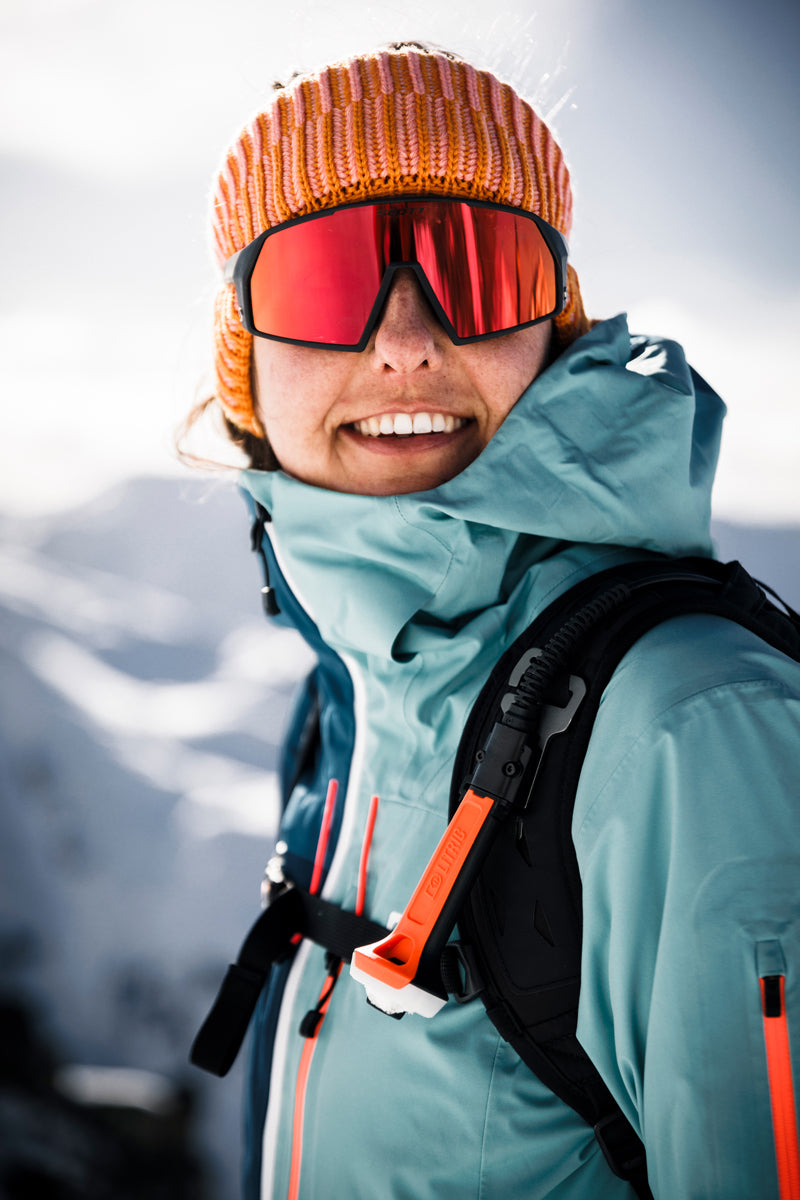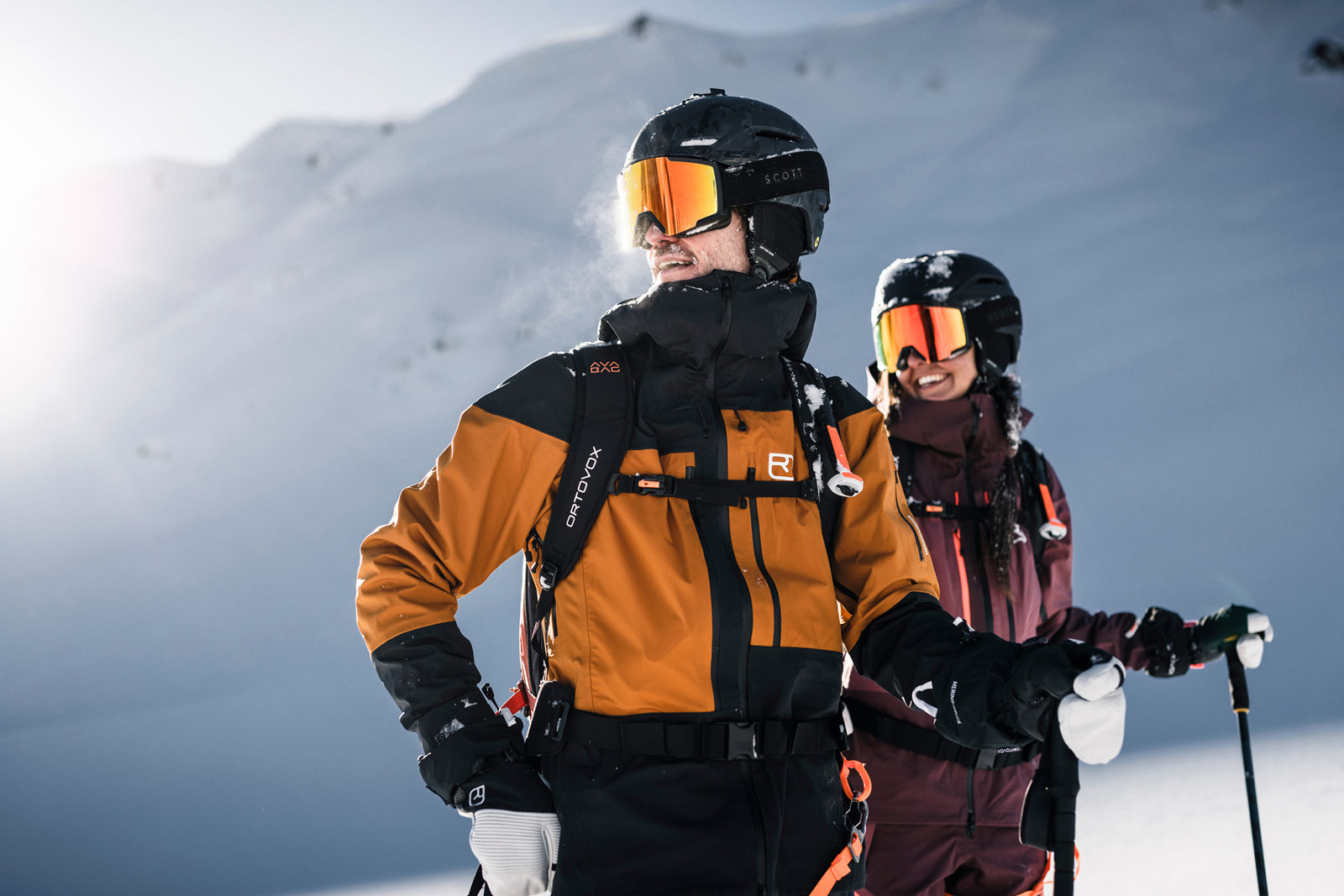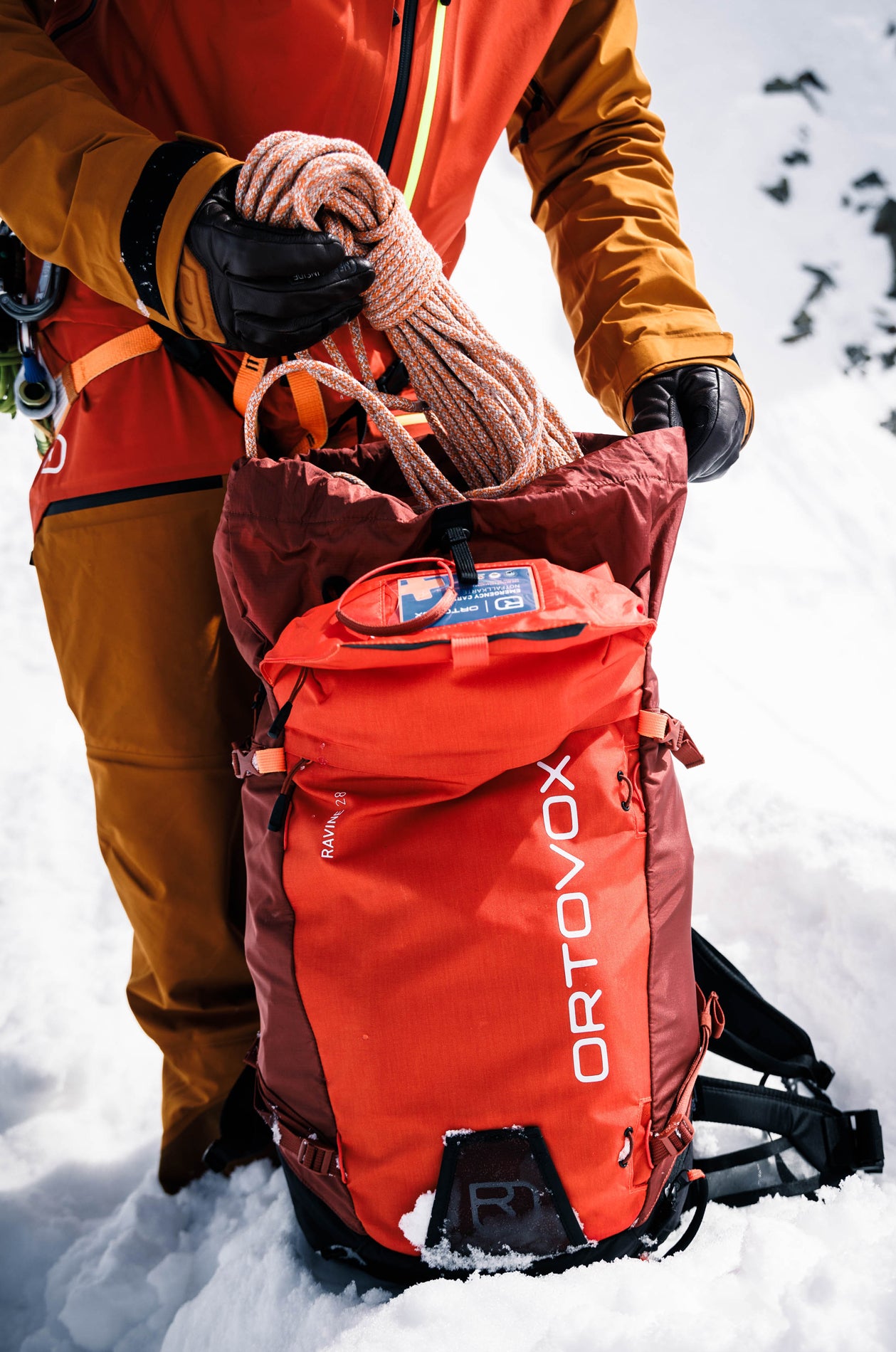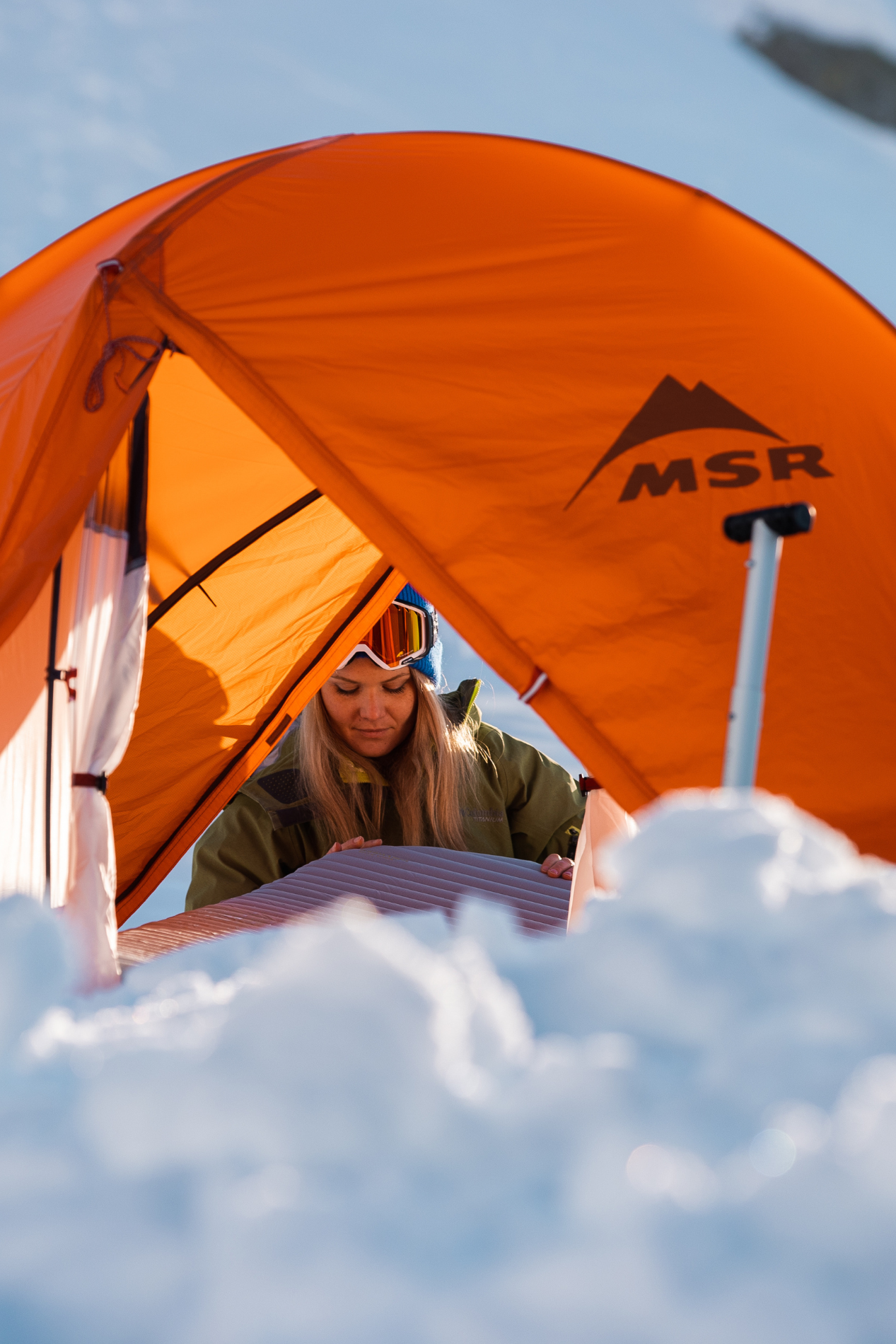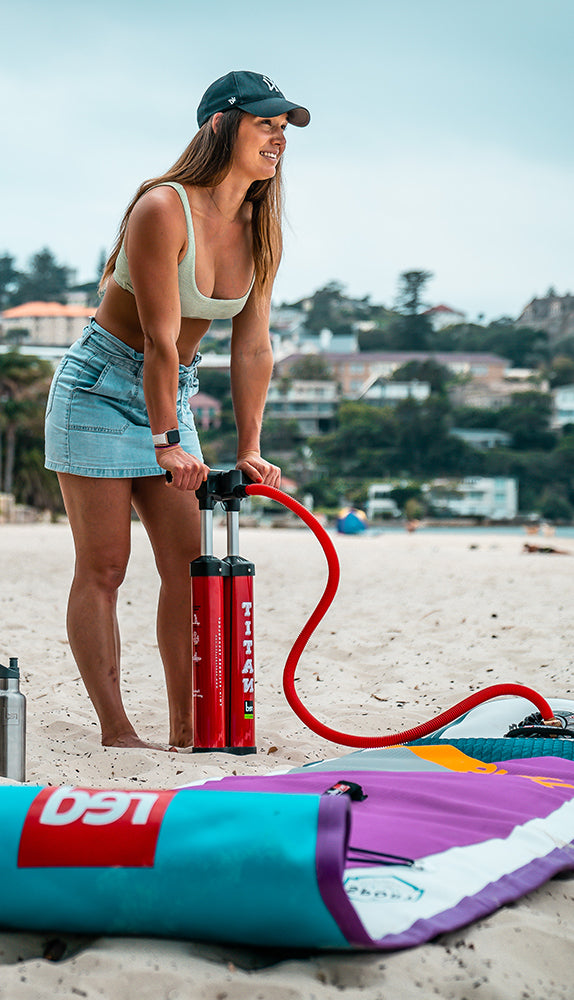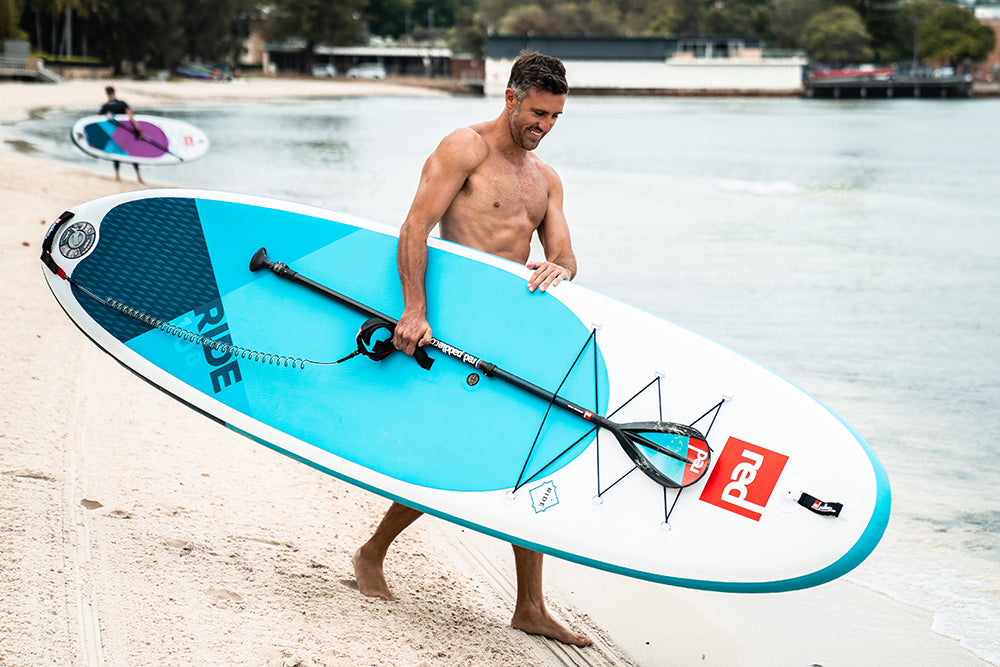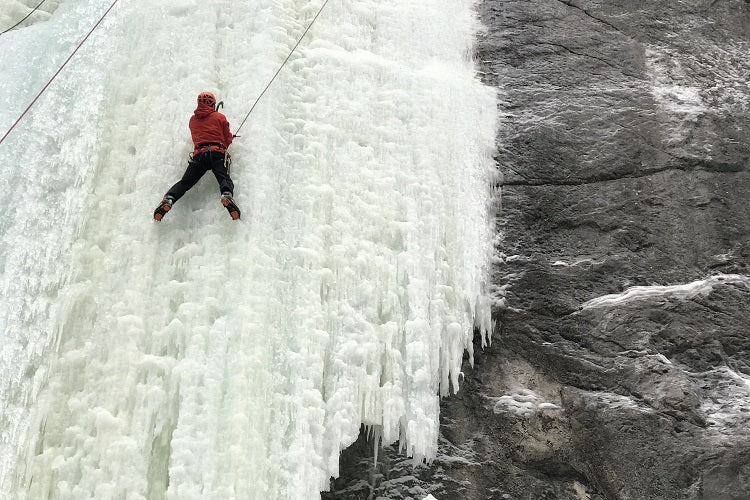Hi Andrius, Denali is known to be one of the world’s toughest expedition challenges. Have you tackled anything of this scale before?
In terms of mountaineering, my hardest climb was on Mount Elbrus (5642 m) in the Caucasus Mountains of Southern Russia. Actually, it was my first real climb too so maybe that’s why it is so memorable for me. We climbed unguided from the North side, temperatures and winds were not in our favour and I even got a frost nip on my toes. Two years ago I climbed Mont Blanc (4810 m) in Chamonix, France and surprisingly it was an easy walk for me. I was still recovering from my last Ironman race but I felt great. Unfortunately, that meant that I didn’t feel as much satisfaction as I did on the summit of Mount Elbrus because I didn’t have to fight for it. I’m not bragging by any means and I like to talk about mountains with the utmost respect, but I guess conditions were perfect and that helped a lot.

So you definitely like a challenge! What do you think has been the toughest adventure you have faced so far?
My toughest adventure was the Transalpine Run in 2012 where my partner and I had to run 320 km across the Alps. The run starts in Germany and finishes in Italy. It was an unbelievable experience both physically and mentally.
So what made you choose Denali for your next adventure?
I moved to Canada last April but I’d been thinking about climbing Denali since before I moved here. After making the decision to come to Canada, I attended a presentation about a climb on Aconcagua (6961 m) in the Andes mountain range, and the presenter also showed some photos from his climb on Denali. That presentation was the tipping point. I figured that since I’d be moving relatively close to Alaska, I should really give it a try! That was 18 months ago and since then I’ve been reading up and preparing. Since Denali is one of the Seven Summits Peaks, it has been very easy to find a lot of good literature on the mountain and the climb itself.
What appeals to you about Denali?
Denali has that unique combination of altitude and harsh environment. Mountains are the most beautiful places in the world but in my opinion, it’s not enough just to look at them from a distance. You have to be in that environment in order to fully experience them. I’ve also not yet been to Alaska, so that’s part of the adventure. For me, it’s all about the adventure.

I’m sure everyone wants to know what gear you’re taking with you! What are the key items in your pack for this trip?
I have a lot of Arc’teryx gear but some key pieces of gear are:
Scarpa Phantom 6000 Boots
These are extremely warm double boots and the weight is phenomenal at 995g per boot. I had a chance to test them this winter and they performed flawlessly on both snow and ice.
Arc’teryx Firebee AR Parka
This is not an expedition grade jacket so I’ll be using it with various mid layers and base layers. However, it does not have any seams on the outer fabric and is also completely windproof, which is a huge advantage over other down parkas.
Merino Wool
And lots of it! Socks, underwear, base layers and mid layers. Merino works extremely well at keeping you warm and wicking away sweat, and it doesn’t stink. I’m sure my climbing partners will be pleased about that!
Garmin inReach Explorer+
This device is amazing! Not only can you send and receive text messages from anywhere, you can also receive detailed weather forecasts directly to your device. And in case of emergency, there is a button to trigger an SOS to their 24-hour monitoring centre in order to receive assistance. I have already created a detailed route for our climb and synced it with my Garmin which means that I have GPS coordinates for every camp or turn on the route plus topographic maps.

What do you think your biggest challenges will be?
To understand the biggest issues on Denali, first you have to learn about its location and how tall (base to summit) it is. Many consider Denali to be the world’s coldest mountain because of its combination of high elevation and subarctic location at 63° degrees north latitude. By comparison, Mount Everest is at the same 28° degrees north latitude as Florida’s Walt Disney World. Last week it was -54˚C with wind-chill on the summit of Denali, meanwhile the summit of Everest was 20 degrees warmer at -34˚C.
Also, the difference in the barometric pressure at northern latitudes affects acclimatization on Denali. On a typical summit day in May, the Denali climber will be at the equivalent of 22,000 ft (6900 m) when compared to climbing in the Himalayas in May. This phenomenon of lower barometric pressure at higher elevations is caused by the troposphere being thinner at the poles.
To add to this, Denali is so enormous that it generates its own weather. All mountains deflect air masses and influence local conditions, but Denali rises so abruptly that this effect is more dramatic here than perhaps anywhere else on Earth. Storms barrel in from the Gulf of Alaska and the Bering Sea and collide with Denali’s towering mass. Weather can quickly change from sunny and clear to blizzard conditions with fierce winds, intense cold, and heavy snowfall.
It is home to some of the world’s coldest and most violent weather, where winds of over 240 kph (150 mph) and temperatures of -71˚C (-95˚F) have been recorded. Finally, Denali rises about 18,000 ft (5500 m) from its base, which is a greater vertical rise than Everest’s 12,000 ft rise (3700 m) from its base at 17,000 ft (5200 m). It’s a lot of statistics but you get the idea, Denali is a real deal even climbing on a regular West Buttress route. Everyday tasks like cooking, melting snow or even answering nature’s call become extremely difficult!
And the thing is, I just can’t wait! I’m absolutely stoked to witness with my own eyes just how beautiful and harsh our Mother Nature can be.

You have certainly done your research! What else have you been doing to prepare for your trip?
Climbers tend to be control freaks because you always deal with uncertainty or something unknown. While it’s part of the game and there would be no adventure at all if you knew everything, climbers want to control what they can. You can’t control seracs or cornices on the ridge but you can significantly increase your margin of safety before even setting foot on the mountain. Have a plan but be flexible, know the route, bring the right gear, be prepared for the worst and don’t blindly follow other climbers.
As part of our training, my girlfriend Raminta and I climbed Mt Rainier (4392 m) in Washington. It’s a classic training climb for the Denali expedition and we did it in 48 hours from Squamish to Squamish. It was extremely fun and slightly scary at the same time. At one point I felt like vomiting because of the altitude and lack of acclimatization but after 30 minutes I was totally fine and we continued to climb while keeping an eye on each other. Severe winds and -28˚C on the summit was a nice bonus! We also climbed Mount Baker to spend some time on the glacier. It’s a beautiful mountain and I would say that it’s an excellent climb for beginners.

To be honest, the West Buttress route is a non-technical climb so all you need is basic mountaineering skills and endurance. I would say that ski touring and running is the best way to prepare for this climb. I wish I had run more during winter but I was too excited about my first ski season in BC! Hiking with a heavy backpack helps too.
What is your plan for the trip?
We are a team of three Lithuanian climbers. I will be climbing with my girlfriend Raminta and an exceptionally strong and experienced high-altitude climber named Danguole who introduced me to mountaineering six years ago. We will climb unguided via the classic West Buttress route. On May 14th we will be flown from Talkeetna to the base camp where we will start our climb. After 18 days, if weather permits, the pilot will come back to pick us up. The best-case scenario is to summit and return to base camp within 14 days. We have allowed for an extra four days in case of severe weather or any other unforeseen reasons.
What do you hope to achieve from the trip?
I try to manage my expectations. In order to reach the summit you need to have a good weather window, be strong enough to carry the loads and not become sick or get injured. That’s a pretty tall order on a mountain like Denali. For me, my team’s safety is to first priority, everything else comes second. So I hope that my climbing partners and I will come back with 10 fingers and 10 toes each and hopefully with smiles on our faces! In any case it will be a great introduction to Alaska.
For those of you who now want to get out there and climb Denali, Andrius has also given us some useful information to share:
Permits
In order to climb Denali, each member of the team requires their own permit from the Denali National park rangers which cost around 300 USD. There are only 1500 permits issued per year so you have to be quick to secure yours. To climb Denali in May 2017 we applied in September 2016. Rangers ask for your climbing history and level of experience on the application form.
Cost
Guided trips cost around 9000 USD not including your flights and all the gear you will require. Our budget was roughly four times less per person and that included our flights.
Clean Climbing
Denali National Park’s mountaineering rangers will celebrate the park’s centennial in 2017 with an eye on the next 100 years of mountaineering. There is a huge focus on ‘Clean Climbing’ sustainable practices. This season, rangers are encouraging climbers to remove 100 percent of their human waste from the popular West Buttress and West Rib routes. To acknowledge the efforts of teams packing out all their waste this first year, an exclusive commemorative flag celebrating the park’s 100th Anniversary is being created as a thank you gift for those expedition members. Our team will try to bring all of our waste down from the mountain and keep Denali clean for other mountaineers.


